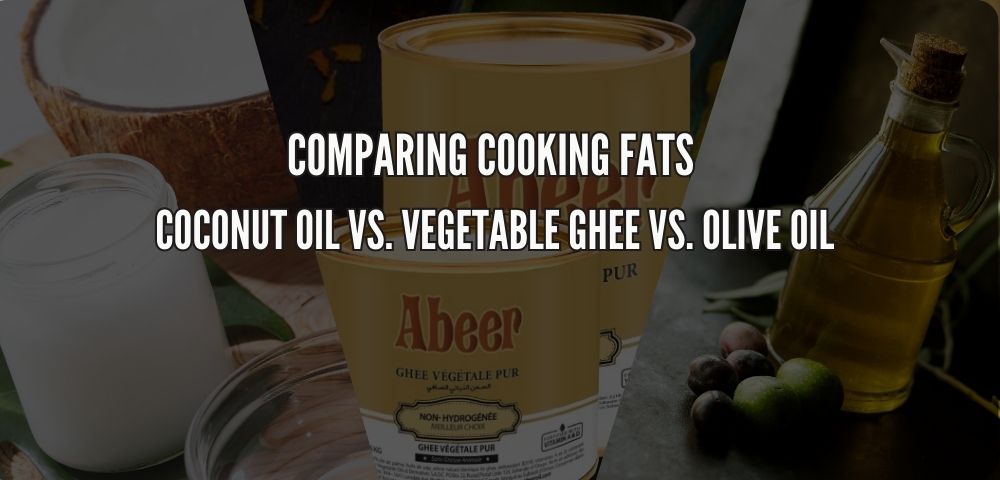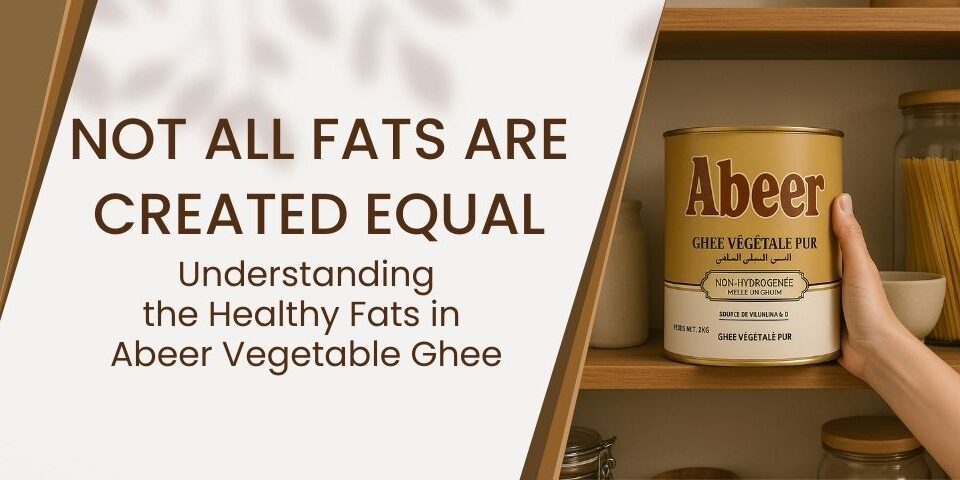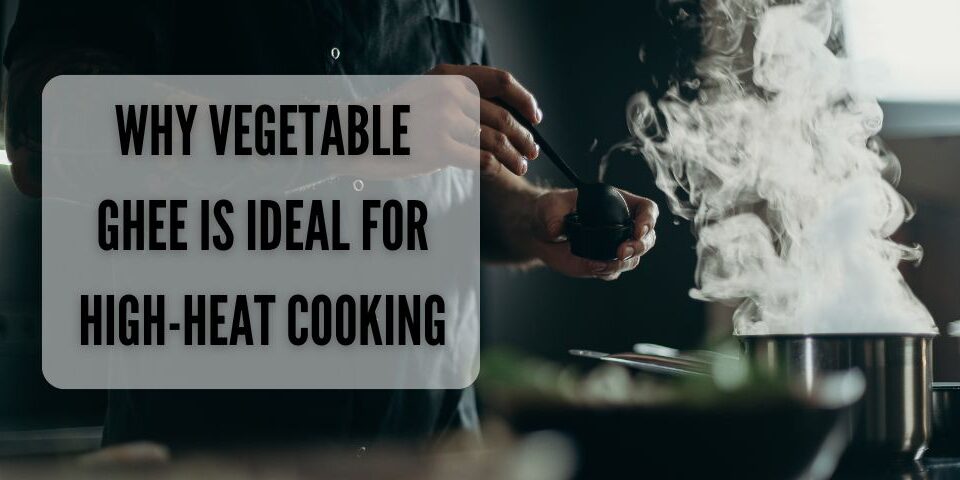
From Tradition to Innovation: How Vegetable Ghee Evolved from Classic Ghee
April 10, 2025
Not All Fats Are Created Equal: Understanding the Healthy Fats in Abeer Vegetable Ghee
May 19, 2025Comparing Cooking Fats: Vegetable Ghee vs. Coconut Oil vs. Olive Oil

Choosing the Right Cooking Fat Matters
Walk down any cooking oil aisle and you’re faced with dozens of options—vegetable ghee, coconut oil, olive oil… but which one is best?
The answer depends on what you’re cooking, your health goals, and how much heat your food needs. In this guide, we break down the key differences between vegetable ghee, coconut oil, and olive oil to help you make the right decision every time you cook.
1. Smoke Point: Stability at High Heat
The smoke point is the temperature at which a fat begins to break down, produce smoke, and release harmful compounds. For frying, roasting, or searing, higher is better.
| Cooking Fat | Smoke Point (Approx.) |
|---|---|
| Vegetable Ghee | 450°F / 232°C |
| Coconut Oil | 350°F / 177°C |
| Olive Oil (Extra Virgin) | 375°F / 190°C |
Verdict:
Vegetable ghee wins for high-heat cooking. It doesn’t burn or smoke as quickly, making it ideal for frying, stir-frying, or roasting.
2. Nutritional Profile: Fats and Heart Health
Let’s take a look at the fat breakdown in 1 tablespoon of each:
| Fat Type | Vegetable Ghee | Coconut Oil | Olive Oil |
|---|---|---|---|
| Total Fat | ~13g | ~14g | ~14g |
| Saturated Fat | ~7g | ~12g | ~2g |
| Unsaturated Fat | ~6g | ~2g | ~12g |
| Cholesterol | 0g | 0g | 0g |
| Trans Fat | 0g (if non-hydrogenated) | 0g | 0g |
-
Vegetable Ghee: Balanced fat content; cholesterol-free if non-hydrogenated
-
Coconut Oil: High in saturated fat, some concerns for heart health
-
Olive Oil: Highest in monounsaturated fats, best for heart health
Verdict:
Olive oil is the best for heart health. Vegetable ghee is a better choice than coconut oil if you’re concerned about saturated fats, especially if you’re using a non-hydrogenated brand like Abeer.
3. Flavor Profile: What Does It Add to Your Dish?
Each fat brings something different to your plate.
-
Vegetable Ghee: Mild, nutty, rich. Adds depth to curries, roasted veggies, baked goods
-
Coconut Oil: Distinct coconut taste. Works best in sweet dishes, Southeast Asian, and tropical recipes
-
Olive Oil: Fruity, grassy, slightly bitter. Great in Mediterranean cooking, dressings, and sautéing
Verdict:
Vegetable ghee is the most versatile—it doesn’t overpower flavors but still adds richness and depth.
4. Best Uses in the Kitchen
| Cooking Method | Best Fat |
|---|---|
| Deep-frying | Vegetable Ghee |
| Baking (neutral taste) | Vegetable Ghee |
| High-heat roasting | Vegetable Ghee |
| Salad dressings | Olive Oil |
| Vegan desserts | Coconut Oil |
| Indian & Middle Eastern cuisine | Vegetable Ghee |
| Mediterranean dishes | Olive Oil |
Verdict:
If you’re doing anything above 375°F (like frying or roasting), vegetable ghee is the safest and most flavorful choice. For salads or finishing dishes, olive oil is ideal. Coconut oil works in niche sweet or tropical recipes.
5. Shelf Life & Storage
-
Vegetable Ghee: Long shelf life, doesn’t require refrigeration
-
Coconut Oil: Stable at room temp, can solidify in cooler temps
-
Olive Oil: Shorter shelf life, should be kept in a cool, dark place
Which Fat Should You Choose?
There’s no one-size-fits-all answer, but here’s a quick recap:
-
For high-heat cooking: Go with vegetable ghee
-
For salads & heart health: Use olive oil
-
For sweets or coconut flavor: Use coconut oil
-
For all-around versatility: Vegetable ghee checks the most boxes
If you want a fat that’s plant-based, stable, flavorful, and works across recipes, Abeer Vegetable Ghee is a smart addition to your kitchen.



